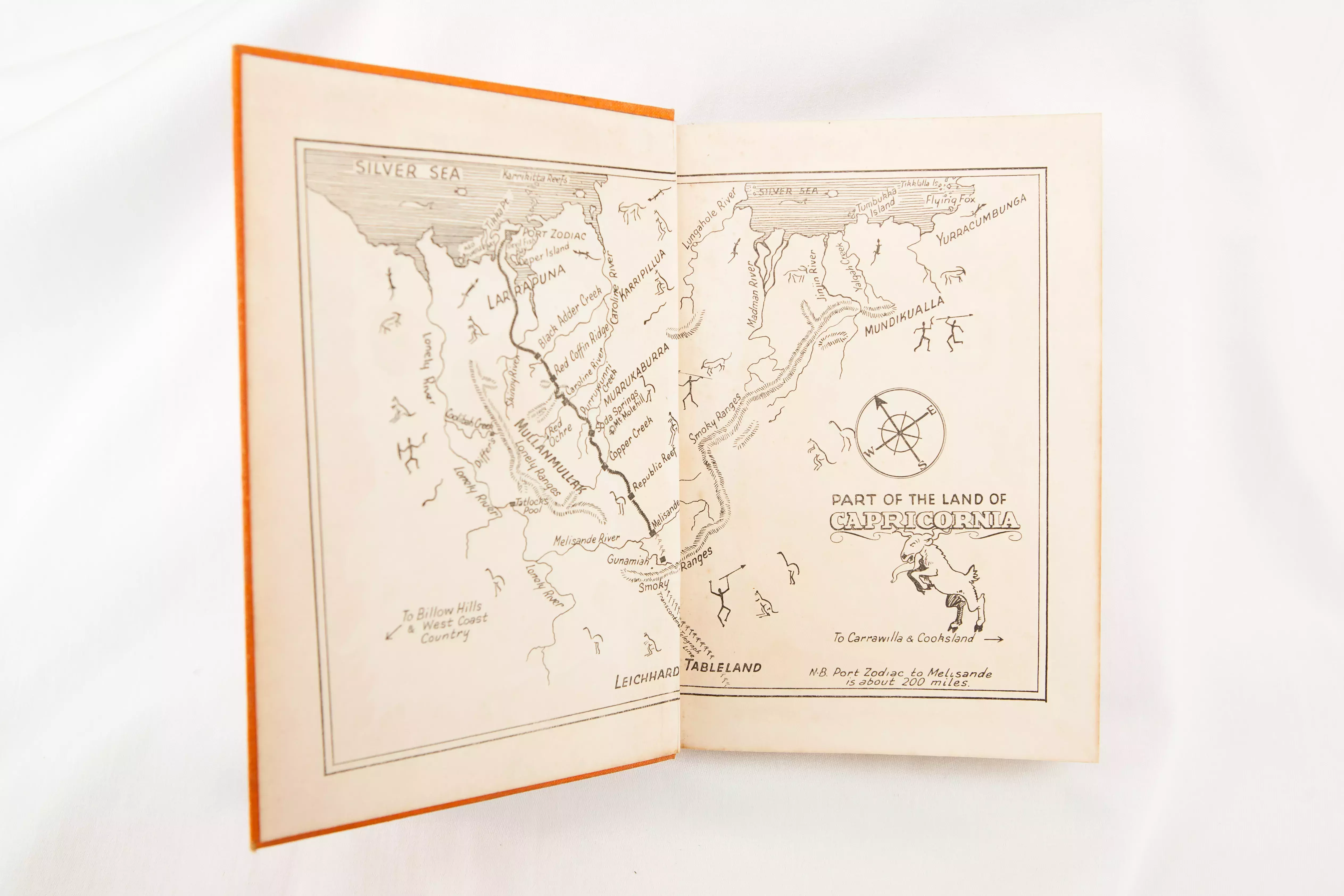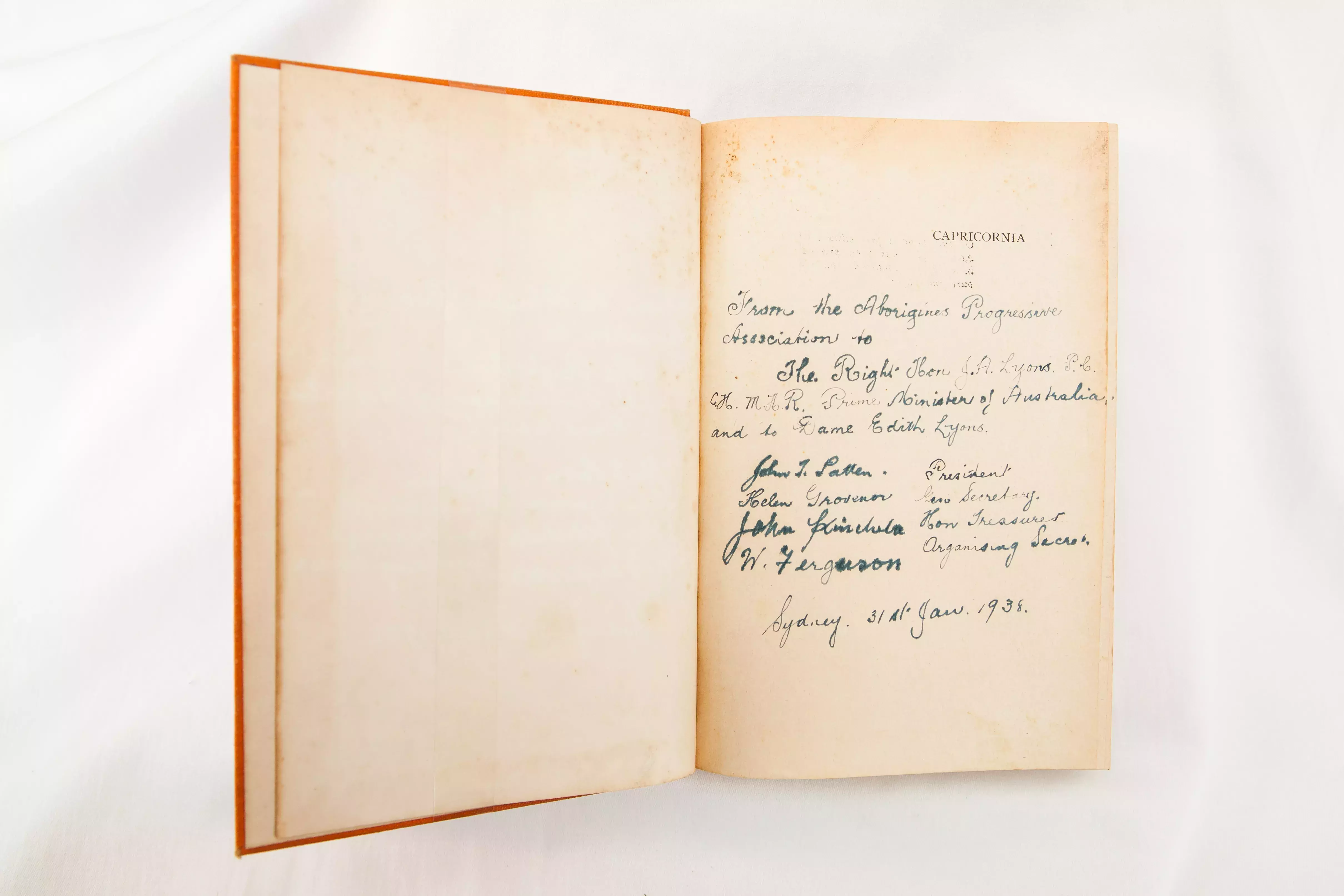Capricornia
This copy of the book Capricornia was presented to Joe Lyons on the 31st January 1938 by a visiting delegation representing the Aborigines Progressive Association.
The novel Capricornia was written by the author Xavier Herbert, famous for later winning the Miles Franklin Award for Poor Fellow My Country. It is set in the fictional land of Capricornia, said to be located in the ‘northern part of the continent of Australia’ and clearly based on the Northern Territory. The book follows the lives of a variety of outback characters across the span of several generations, and is notable for focussing on non-conformist and underdog personalities. It is also significant for its unflinching portrayal of the lack of understanding, failures and abuses inherent in the white settlement of Australia.
The Aborigines Progressive Association had been founded in 1937 by William Ferguson, and was most famous for petitioning King George V to return Aboriginal reserve lands to native owners and for organising the ‘Day of Mourning’ conference held on Australia Day in 1938. The conference was attended by over 100 people and resolved to mark the ‘150th Anniversary of the whitemen's seizure of our country’ by appealing for ‘a new policy which will raise our people to full citizen status and equality within the community’. Ongoing correspondence between the Association and the Government was reported to have ‘made a most favourable impression upon the Prime Minister’, and a meeting was soon organised at Joe Lyons office in Sydney to discuss a manifesto of 10 national reforms.

Copy of the book Capricornia presented to Joe Lyons on the 31st January 1938 by a visiting delegation representing the Aborigines Progressive Association.
Photo: National Trust of Tasmania
The meeting received significant coverage in the Press, as it was believed to be the first such indigenous delegation since the days of Governor Macquarie. Also notable was the decision by the Prime Minister to meet privately with the group, forbidding any other government officials or press representatives, although it was reported that ‘Dame Enid Lyons may attend’. According to Joe this was because ‘his wife had always had a keen interest in the welfare of the Aboriginal race… [an issue] …especially poignant to anyone who had studied the tragedy of the Tasmanian blacks’. Joe Lyons was also quoted as ‘looking forward to meeting Doug Nicholls’, a member of the delegation who played football for the Fitzroy Football Club, and who was to be credited ‘for never [having] an umpire warm him for unfair play’.
A key issue discussed at the meeting was the possibility of the Federal Government taking over responsibility for the indigenous population who had to this point been the responsibility of the States. The delegation argued that the current system ‘was too harsh, that conditions of living were shocking, and that managers of reservations had too much power, and used it’. The APA was of the belief that the Federal Government would be in a better position to achieve ‘uniform treatment’ and push towards ‘full citizen status and civic equality’. The Prime Minister was reported to have noted the difficulty involved in gaining the consent of the States and bringing about necessary constitutional changes, but resolved to ‘call a conference of the states to discuss the whole question’. One reform that was seen as more feasible was the possibility of introducing an Indigenous Representative to the Federal Parliament to give voice to the Aboriginal population.

Photo: National Trust of Tasmania

